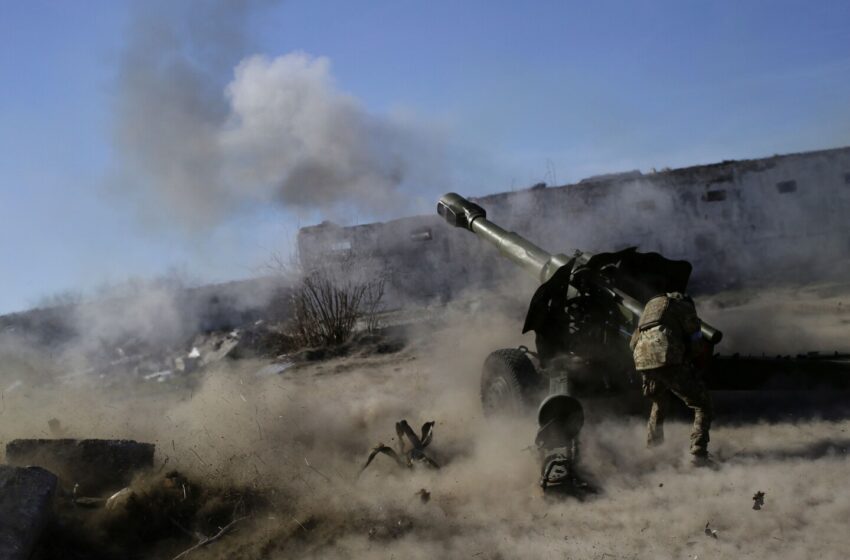
U.S. sends Ukraine new Phoenix Ghost drones, howitzers for Donbas battleground

The latest package includes 72 155-millimeter howitzers and the tactical vehicles to tow them, along with 144,000 additional artillery rounds. That is a significant increase over the 18 howitzers in another shipment also announced in April, and it is enough to equip five battalions, said Pentagon spokesman John Kirby.
By some expert estimates, the 144,000 artillery rounds could last as long as four weeks. “The howitzers are really equipment designed to help Ukrainians hold the line against the forthcoming Russian assaults,” said Samir Puri, a Singapore-based military analyst with the International Institute for Strategic Studies.
Also in the package are over 120 Phoenix Ghost Tactical Unmanned Aerial Systems — a drone that the U.S. Air Force developed “in response, specifically, to Ukrainian requirements,” according to Kirby. Later in the day, he said the drones had actually been “developed for a set of requirements that very closely match” the Ukrainians’ needs for current operations in Donbas.
“Its principal focus is attack,” he said.
The Phoenix Ghosts, designed by AEVEX Aerospace, are similar to Switchblade drones, which are small and precise weapons packed with explosives that are able to strike targets in “kamikaze” fashion. The Phoenix Ghost system will require minimal training for experienced drone operators, according to Kirby. Washington announced in March it would send 100 Switchblades to Kyiv.
Ukraine has kept the Kremlin from taking a major prize — Kyiv, the capital — by successfully adopting guerrilla-style tactics in the forests of the country’s north and west. But the open and flat lands of the east are far less hospitable to such tactics, and are more friendly to Russia’s ability to muster large mechanized formations of tanks and armored vehicles.
Warmer weather in the coming weeks will also provide the Kremlin’s armored formations with greater freedom of movement. On Thursday, the British Defense Ministry said that Moscow’s forces were advancing toward Kramatorsk, an eastern Ukrainian city that is a constant target of Russian missile and rocket fusillades.
The Phoenix Ghosts may address some of these challenges by allowing Ukraine to strike at Russia’s advancing columns from afar, said Puri. Ukrainian forces on the retreat “can stay in the fight somewhat from a slight distance away … and still [present] a serious threat.”
Kyiv has found success with other drones. Ukraine’s Turkish-made Bayraktar TB2, the size of a small airplane and equipped with laser-guided missiles, has wreaked havoc on Russian tanks and trucks. Russian President Vladimir Putin had previously protested to his Turkish counterpart, Recep Tayyip Erdogan, over the transfer of those arms to Ukraine.
The Phoenix Ghost is a tactical weapon designed to “deliver a punch” and would be useful against a number of different targets, said a U.S. defense official, who spoke on the condition of anonymity under terms set by the Pentagon.
Such weapons are also light and portable, which makes them easy to ship from Ukraine’s NATO neighbors and from the country’s west to the eastern front line, said Puri. By contrast, delivering howitzers come with logistical challenges and greater risk of Russian interdiction, he added.
Dermirjian reported from Washington and Cheng from Seoul. Liz Sly and Dan Lamothe contributed to this report.
